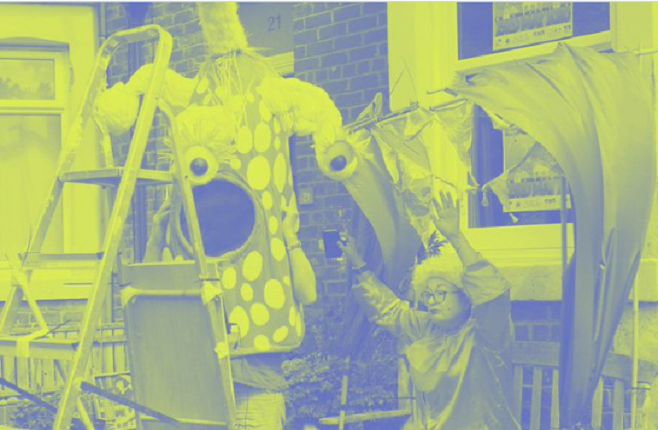Creativity, Culture & Connection: A case for dispersed leadership

This blog has been released to coincide with the publication of ‘Creativity, Culture and Connection‘, a new report from Common Vision which looks at the impact of Covid-19 on arts and culture organisations.
The creative industries have been amongst the worst hit by the COVID-19 crisis. Theatres are closed, galleries are on lockdown and music venues have gone quiet. As big institutions struggle to find a way forward, innovation is thriving at a community level, where dispersed leadership and creativity are helping minimise the worst effects of this crisis.
“As big institutions struggle to find a way forward, innovation is thriving at a community level, where dispersed leadership and creativity are helping minimise the worst effects of this crisis.”
Nowhere is this more evident than in the communities taking part in the Creative Civic Change (CCC) funding programme. CCC is a partnership between Local Trust, the National Lottery Community Fund, the Calouste Gulbenkian Foundation (UK Branch), and the Esmée Fairbairn Foundation. The programme was launched in May 2019 and supports 15 communities across England to use the power of arts to make a meaningful change in their areas. COVID-19 hit as many areas were reaching the peak of their activity, but they have all found ways to respond to the crisis, and to thrive in the ‘new normal’.
Community leadership is at the heart of all 15 CCC programmes, and this has been key to their ability to respond to COVID-19. Each area is led by a dynamic partnership of community leaders, volunteers, creatives and local organisations. As funders, we transfer all decision-making power, responsibility and resources to these groups, with no limits on ambition or outcomes, and no restrictions on how they spend their money.
“Our CCC communities have been busy hosting lockdown carnivals, delivering creative packs to local families, and providing key services like food-banks and PPE.”
This structure of dispersed leadership has been crucial in enabling creative projects to continue during the COVID-19 pandemic. As organisations closed their doors and professionals were put on furlough, our communities have been busy hosting lockdown carnivals, delivering creative packs to local families, and providing key services like food-banks and PPE.
The benefits of this can be seen in the example of Greater Creative in Blackwell. This group is held in part by Platform Thirty1, a brilliant local arts organisation dedicated to co-creating change with their community. Like many arts organisations, they were forced to put their staff on furlough at the start of the pandemic and much of their activity had to stop. Their CCC project, however, could continue, as residents and volunteers were able to keep engagement going at this vital time.
They have gone on to do some spectacular projects during this crisis including their ‘Create a Crest’ project with artist, David Wadsworth. ‘Create a Crest’ saw local residents collect a soft clay tile that they could then use to create their own ‘House Crest’ during the UK wide lockdown. Over 400 tiles were produced and are being installed in prominent local locations to celebrate and commemorate community spirit, marking this as a key moment of Parish history.
Dispersed leadership has also enabled CCC areas to quickly change and adapt their plans to meet new community challenges. Filwood Fantastic in Bristol had been looking forward to installing a communal mini-golf course for their whole community to enjoy this summer. After the pandemic hit, they quickly adapted the idea to work during lockdown, launching their Mini Golf Club with workshops, parties, and activities for everyone to enjoy at home. The lead artist for this project, Megan Clark-Bagnall says of the experience; “It has been super popular. Twelve families and many local furloughed staff have joined together for the Mini Golf Club. We regularly meet online, share hobbies & interests and work in partnership to build our very own mini golf holes. It’s a whole lot of fun and silliness. It’s been amazing to get to know our neighbours through the internet and in many ways I feel more connected to my neighbourhood than before.”
Having artists like Megan working within their own community has been key to areas success at this time. “Being local has helped immensely. I’m here, you’re here, we’re all here together and it’s quite special. It’s just a feeling of togetherness really.”
“CCC areas have shown that the best solutions to local problems can be found at a community level.”
Whilst there has been an abundance of positive stories coming from CCC communities over the last six months, there is no getting away from the enormous negative impacts this pandemic is having on communities. CCC areas have shown that the best solutions to local problems can be found at a community level, and it is up to funders, policy makers and organisations to make sure every community has the required resources and support to realise these. In turn, we can learn how to make our organisations and projects more equitable, flexible and dynamic by looking to our communities for inspiration.
